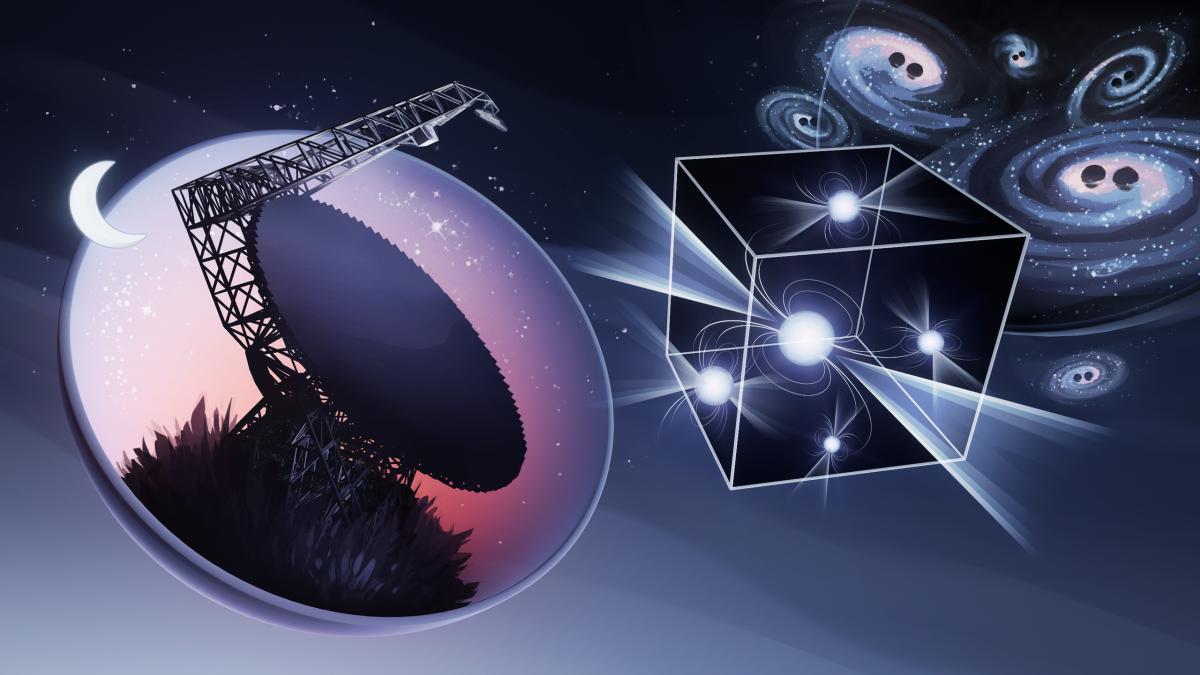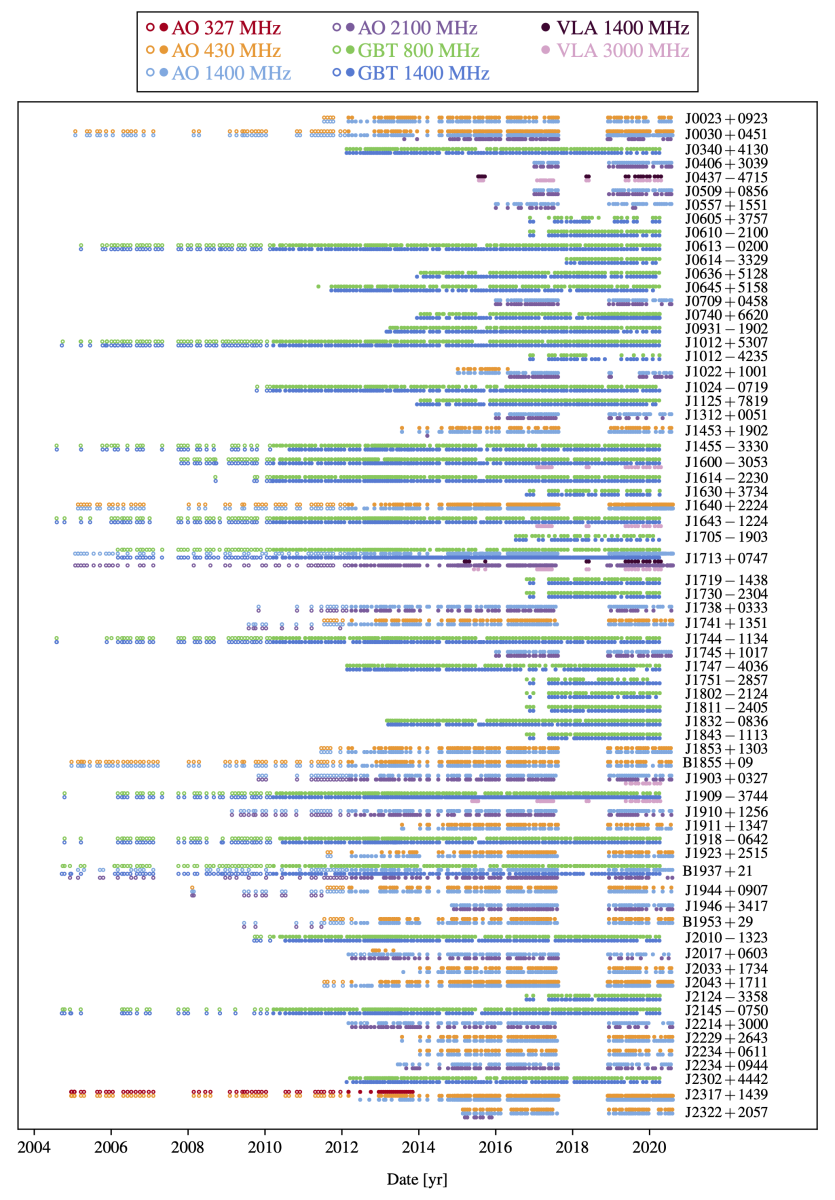
We monitor an array of radio pulsars with the Green Bank Telescope in order to detect gravitational waves from the supermassive black holes at the cores of distant galaxy mergers. Illustration: Olena Shmahalo
The North American Nanohertz Observatory for Gravitational Waves (NANOGrav) is a pulsar timing array experiment that monitors a growing array of millisecond pulsars (MSPs) with some of the largest radio telescopes in the world. These observations enable high-precision timing over decadeslong timescales with the aim of directly detecting gravitational waves from merging supermassive black hole binary systems. This is a multifaceted project that requires expertise in many areas, each of which is covered in five companion papers detailing findings in NANOGrav’s latest “15-year” data set.

All timing measurements in the data set. Most pulsars are observed once per month. The observatory and radio
frequency used are indicated by color (see legend). Data acquisition systems are indicated by symbols: open circles
are first-generation pulsar timing instruments, while closed circles indicate that upgraded instrumentation was used for
the observation. Improvements in instrumentation and a significant increase in the number of pulsars being monitored
have greatly increased the sensitivity of the pulsar timing array to gravitational waves.
In the first paper of this series, we present observations and analyses of 68 millisecond pulsars, each of which is observed roughly monthly, some for more than 15 years. We made observations using the Arecibo Observatory, in Puerto Rico, the Green Bank Telescope, in West Virginia, and the Very Large Array, in New Mexico. This is NANOGrav’s fifth public data release, containing 21 more pulsars than our previous data set – the largest expansion of our array to date. Most of these were pulsars that were newly discovered in recent sky surveys with radio and gammaray telescopes. Millisecond pulsars are scattered throughout the Milky Way Galaxy; those observed by NANOGrav are within a few thousand light years of Earth. They emit beams of radio waves while spinning hundreds of times per second. Like the flashes of a lighthouse beacon, the pulsar signals are a series of pulses of radio waves. These pulses act as the very precise “ticks'' of cosmic clocks. The times at which these pulses are detected by radio telescopes can be measured to within a millionth of a second.
"Gravitational waves stretch and compress the space between a pulsar and the Earth … we aim to detect this stretching and shrinking by its effect on pulse time-of-arrival measurements."
Anything that changes the distance between the pulsar and the Earth will make the pulses arrive a little earlier or a little later at a telescope. Gravitational waves stretch and compress the space between a pulsar and the Earth, and we aim to detect this stretching and shrinking by its effect on pulse time-of-arrival measurements. In order to do this, we need to model and remove from the data anything else that affects the distance between the pulsar and the Earth, such as binary motion of some pulsars, their motion through our Galaxy, and the Earth’s motion as it moves through the Solar System. As a byproduct of this process, we have refined orbital models for the fifty binary pulsars in our sample, allowing us to precisely measure the masses of several pulsars.
After the data in this paper were collected, the Arecibo Observatory experienced a catastrophic cable failure, leading to its collapse in August 2020. NANOGrav is continuing its millisecond pulsar observing program using the Green Bank Telescope, the Very Large Array, and the CHIME telescope in Penticton, British Columbia, Canada.
Agazie et al., 2023, The NANOGrav 15-year Data Set: Observations and Timing of 68 Millisecond Pulsars. DOI: 10.3847/2041-8213/acda9a
Corresponding Authors
 |
Dr. Joe SwiggumLead for the Observations and Timing Paper
|
 |
Dr. Thankful CromartiePulsar Timing Working Group Chair
|